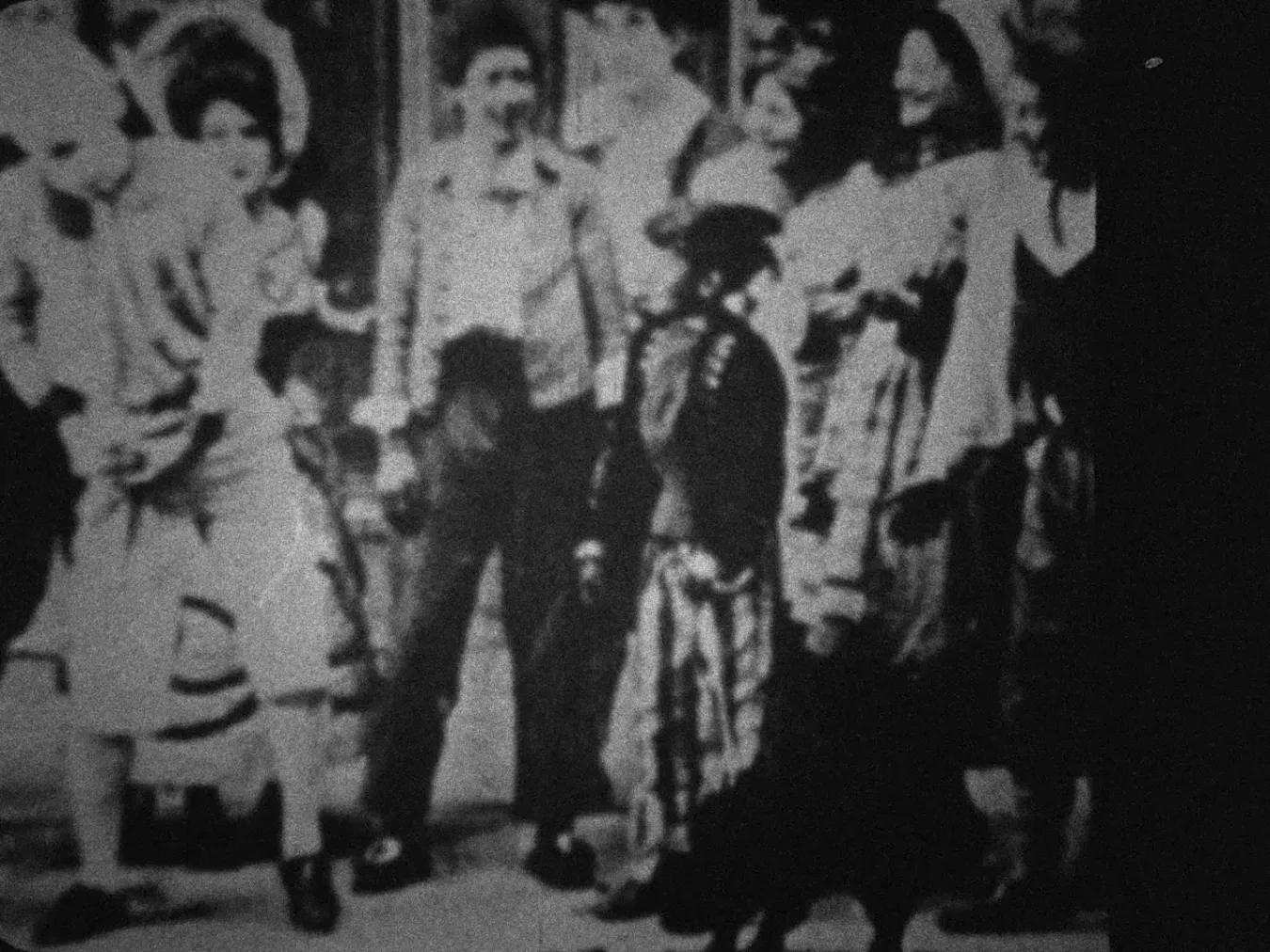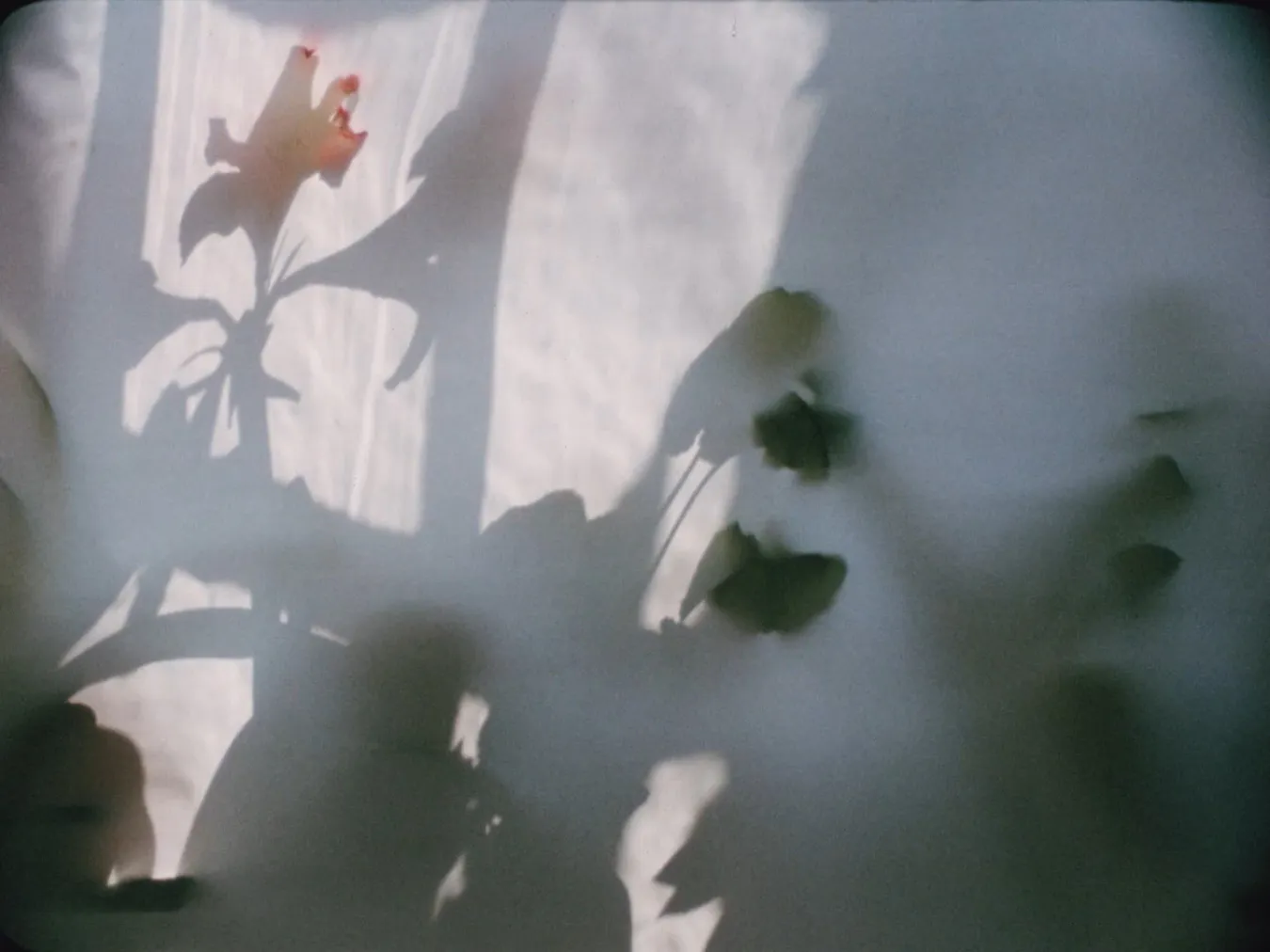Tom, Tom, the Piper's Son (1969) and Lying
17/07/2024
- Epnr
17/07/2024
- Epnr
In Tom, Tom, the Piper’s Son (1969), Ken Jacobs stretches the position of viewership to its extremities, despite the film's seeming randomness and arrhythmic qualities, through repetition of the same sequences over and over focusing on different aspects, the narrative of the source film (which shares the namesake) is constantly retold. Through the retelling Jacobs not only exhausts all possible readings of the original textual elements of the source film, but the material elements as well. This material analysis of the original film is reliant on the fact that it was preserved as a paper print, this unlike nitrate holds specific textural qualities (the makeup of the pulp, the level of acid in the paper, the distribution of ink, and so on) that are exaggerated by the quality of 16mm celluloid film. The premise of exhaustive repetition is not unique to Tom, Tom, the Piper’s Son, films such as Barn Rushes (1971) and Print Generation (1974) rely on repetitive structure (one filming the same path past a barn, the other contact printing a sequence of images until they become unrecognisable) to understand both the act of seeing and its relation to film as an object. There’s an excitement and tension in working out what is being seen and what is being omitted when watching Tom, Tom, the Piper’s Son, there are moments of shock, moments of sadness, all things that seem to be ignored when talking about the pleasures of experimental film. The joy of movement and texture is more than technicality, it is physical and rooted in the materiality of film.


Rashomon (1950) is a narrative film that revolves around a similar act of repetition, the retelling of a remembered event multiple times, each time the event is recounted different aspects are omitted (purposefully, as an act of lying). This lying is not dissimilar to the omission in Tom, Tom, the Piper’s Son, however, the clearest lies come when Jacobs (at near random) inserts filmed footage of flowers behind and infront of a fabric sheet. These scenes are completely removed from the conceit of the film as the rephotography of a victorian tableau. This slight, very human element, is so major in fact it disjoins Tom, Tom, the Piper’s Son from the pre-established tradition of repetition based experimental film, Barn Rushes in comparison looks near clinical in its almost unchanging path.

The inclusion of a lie in a work like Tom, Tom, the Piper’s Son is both pleasurable and shocking, because the work presents itself dryly (by showing the original film in full to bookend the 100~ minutes of rephotography). Like the pleasure of texture, the pleasure of uncovering a lie is more than technical, it is physical and rooted in memory and history as an oral fabric to be manipulated at the will of language. Everytime someone speaks a lie is spoken, be it through purposeful omission or warping of events or the constraints of language. The most obvious lie baked into the English language is the singular and consistent first person pronoun. “I saw”, which is the statement most apt for film, is untrue because the self that recounts is not the self that saw, time and the act of seeing has already separated the two selves.